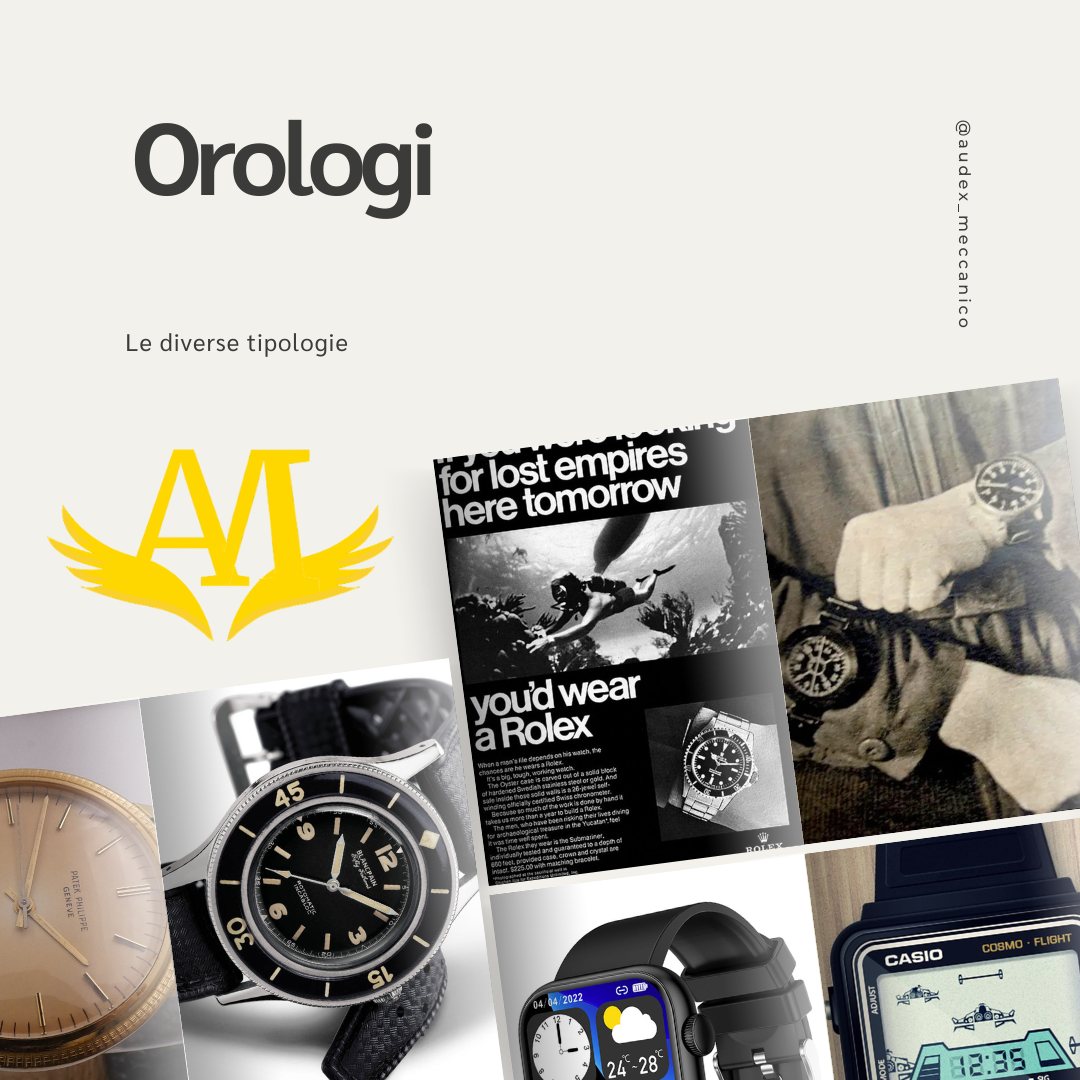
The different types of wristwatch: a journey through history and design
Share
Wristwatches are not just tools for telling the time, but true objects of style, technique and innovation. From the trenches of the First World War to the depths of the ocean, to the wrists of space explorers, the wristwatch has survived eras and technological revolutions. In this article, we explore the main types of wristwatches and their fascinating historical journey.
1. The classic wristwatch
The classic watch is the symbol of timeless elegance. Usually characterized by a thin case, simple dial and leather or metal strap, it is the ideal companion for formal wear. This type of watch has roots in the 19th century, when the first models were worn by the European aristocracy, but it became popular in the 20th century with the industrialization of watchmaking.
2. The military watch
The first real boom in wristwatches occurred during the First World War, when soldiers needed practical and robust tools to coordinate operations. This is how military watches were born: highly legible dials, shock-resistant cases and canvas or leather straps. Even today, many brands are inspired by these designs to create watches with a strong and functional style.
3. The diving watch
1953 is the year when the world of watchmaking is revolutionized with the launch of the Rolex Submariner and the Blancpain Fifty Fathoms, the first true diving watches. These models, water-resistant and equipped with rotating bezels to calculate dive times, have become timeless icons. A diving watch is distinguished by its robustness, its high-visibility dial and its resistance to pressure.
4. The chronograph watch
The chronograph is one of the most fascinating complications in watchmaking. This type of watch, equipped with a stopwatch function, has found applications in the world of science, aviation and sports. The legendary Omega Speedmaster, for example, was the first watch on the Moon in 1969, an icon of space exploration.
5. The digital clock
With the advent of quartz in the 1970s, digital watches changed the game. The first model with an LED display, the Pulsar P1, was launched in 1972, while Casio and Seiko made the technology accessible to everyone. Today, digital watches remain synonymous with convenience and advanced functionality, especially in the world of sports and technology.
6. The smart watch
In recent years, smartwatches have taken over the market, combining digital technology with traditional design. With features ranging from health monitoring to smartphone connectivity, smartwatches are the latest evolution of the wristwatch.
Conclusion
From the first pocket watches transformed into wristwatches to the latest generation of smartwatches, watchmaking is a story of continuous evolution. Each type of watch has marked an era and continues to represent a perfect mix of aesthetics, engineering and passion. Which is your favorite?
